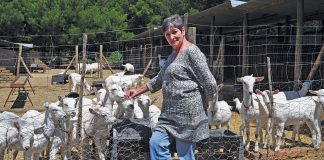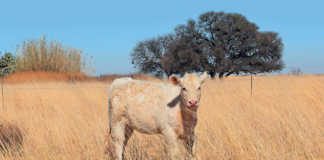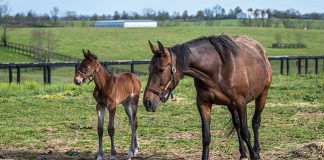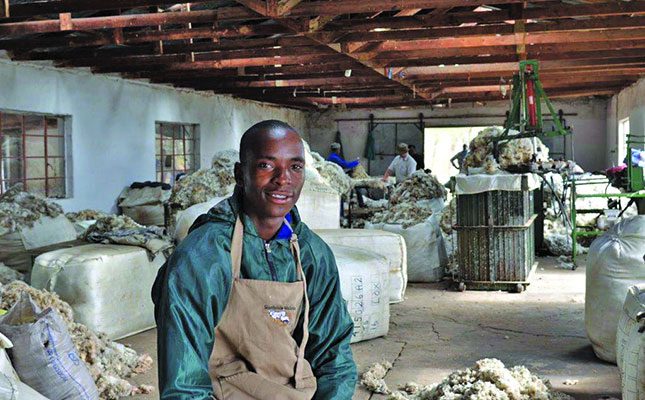
Photo: Luvo Kiyane
Luvo Kiyane (34) was raised by his grandparents, David and Nowinara Kiyane, in uLahlangubo, near Cala, in the Eastern Cape.
Here, as a boy, he spent many days tending to the family’s livestock in the vast communal grazing areas of the region.
READ Setting up marketing facilities and community structures can boost business
In 2004, when Kiyane was 17, his grandfather gained access to a 530ha farm, Shuna, in the nearby Elliot district via the state Land Redistribution for Agricultural Development (LRAD) programme.
Shuna was initially shared by 10 other beneficiaries (today six), making it difficult for the grandfather-grandson team to make ends meet; a reality that always forced Kiyane to find alternative income streams.
In mid-2023 his grandfather died, and Kiyane now farms 130 Merino sheep and 50 crossbred breeding cows on Shuna alone while steering Kiyane Shearing Contractors in Cala.
Road to Agricultural Independence
Kiyane’s grandfather was relieved to transfer his livestock from uLahlangubo location to Shuna in 2004.
“It was difficult to farm in the communal areas, because the land was shared by everyone,’’ says Kiyane. “You cannot, for example, have breeding seasons and manage disease like sheep scab.’’
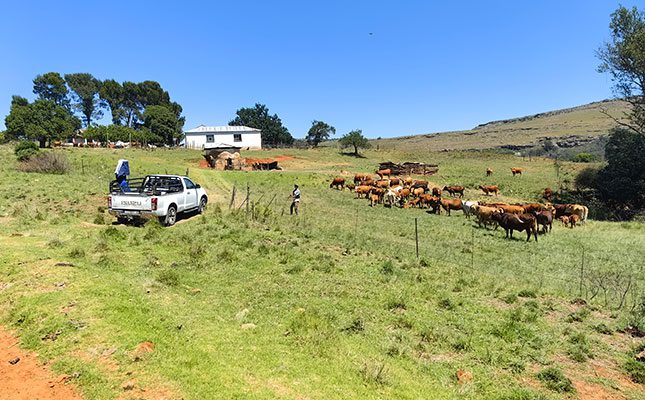
After Kiyane and his grandparents had settled on Shuna, it was decided that he would complete his education at the Ida High School which the principal, Ruben Gouws, had turned into a local farm school that became recognised nationally for academic excellence.
After completing his schooling, Kiyane studied for a national diploma in agriculture at the Grootfontein College of Agriculture in Middelburg in the Eastern Cape.
He graduated in 2012 and the very next year accepted an internship at the National Wool Growers Association (NWGA) to be trained as a wool production adviser in the former Transkei.
The stint at NWGA helped Kiyane nurture a passion for wool and he even visited New Zeeland and Ireland to compete on the global stage with his wool classing and sorting skills a few years later.
Side hustles
Over the years he found it essential to augment his income from Shuna with side hustles including involvement in the livestock auctioning in 2014, a job as a wool production adviser in the Free State in 2015, a position as an OVK wool production adviser in Elliot from 2015 to 2021 and his own sheering contractors business, Kiyane Shearing, established 2014.
Sheep and Wool
Kiyane’s grandfather had managed to maintain a flock of pure Merinos when still farming in uLahlangubo location.
He sourced quality rams through the NWGA/ Eastern Cape Department of Rural Development and Agrarian Reform genetic improvement programme.
Today Kiyane’s flock of 100 breeding ewes is defined by a replacement rate of about 20% with young ewes put to rams (bought from local stud and commercial Merino breeders) for the first time at the age of 12 months in a mating season from October and November.
READ Meat, milk or wool: choose a sheep breed fit for purpose
A lambing rate of 120% is achieved and lambs are weaned at an age of 100 days. After the selection of replacement ewes, the rest of the lamb crop is sold into the communal areas of the former Transkei.

About three to four bales of wool, defined by an average micron of between 18 and 19, is produced annually on Shuna. Kiyane’s sheep receive a standard inoculation and dosing regimen while the oats (15ha) and maize (30ha) planted for all livestock on the farm annually has proved vital in boosting production in the flock.
The decrease in the wool price over the last few years has convinced Kiyane to introduce a mutton breed in the form of Dormers and he has already acquired 20 ewes and a ram this year.
However, his greatest involvement with sheep is through Kiyane Shearing Contractors which was established with his wife Vuyiseka almost a decade ago.
Clients include emerging, communal, and commercial wool producers that are offered services including wool shearing, classing, marketing, and transport of wool.
Kiyane has teams that operate across the Eastern Cape and include two three-man electric shearing teams and a five-man hand shearing team supported by trained wool handlers that process wool harvested from 30 000 sheep annually.
Cattle
Although Brahman bulls have been used extensively in the crossbred cow herd on Shuna bulls from other breeds including Simmentaler, Nguni, Beefmaster and Simbra have also been put to breeding females.
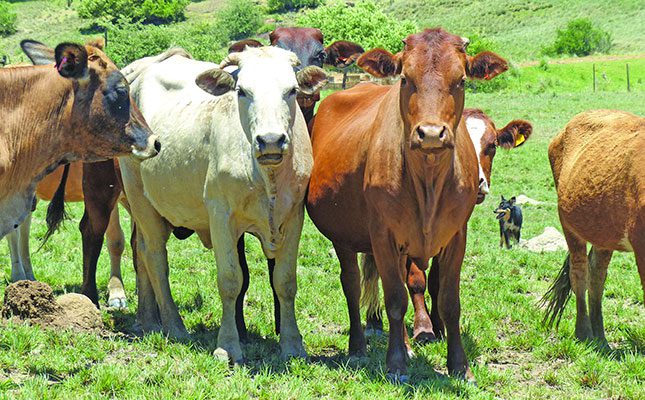
Bulls are put to cows in a mating season from November to January at a rate of 25 cows/1 bull in a multi-sire system. Heifers are introduced to the herd at a rate of about 15% every year when at an age of between 18 and 24 months.
Cows are afforded only one opportunity to “skip” (not calve) after which they are culled.
“You cannot keep a passenger who is not going to pay,’’ Kiyane says. “It is like a taxi business; if someone is sitting there not paying, they must get out. It is no different with a herd of beef cattle.’’
Kiyane markets weaners at the age of six months that on average weigh between 180kg and 200kg.
Cattle receive a standard inoculation programme with special emphasis on the de-worming of calves starting at the age of one month.
Cattle receive a protein lick in winter and a phosphate lick in summer and are dipped every 14 days in summer and only when tick loads are visible in winter.
Although Kiyane sells most of his cattle through formal markets, he also markets animals at vibrant informal communal markets.
The maize and oats produced on Shuna annually is invaluable in the beef enterprise from ensuring extra feed in winter to rounding off animals for the market.
Challenges
Kiyane says the fact that Shuna has multiple beneficiaries is a major complication. “Everybody has an animal here,’’ he says.
“It is very difficult getting control over grazing and breeding.’’ However, after recent discussions with beneficiaries it has been agreed that Kiyane will be able to farm independently on 300ha.
He hopes to one day own his own commercial farm, a reality not yet made possible by the state land reform process despite his education, experience, and relative youth.
“A farm of my own is my dream,’’ he says.
“The problem [with the state land reform programme] is politics and corruption, because at the end of the day it is not what you know, but rather who you know.’’
According to Kiyane what really keeps him up at night is the increasingly unpredictable weather patterns. “Last year was too wet and this year it’s too dry,’’ he says. “You cannot predict anything weatherwise any more as it has become extreme.’’
Although, since Farmer’s Weekly’s interview with Kiyane, welcome rains have arrived on Shuna, on the day of the interview it was clear he was a deeply concerned about the lack of rain that had not only hampered his ability to plant maize in 2023, but had also severely impacted on the availability of drinking water for his livestock.
Another serious constraint, says Kiyane, is the lack of law and order. “There is no security in South Africa and if you don’t take action yourself nothing will happen.’’
His advice for young farmers is to exhibit tenacity while embracing adaptation.
“Youngsters must know farming is not child’s play. You must be skilled and patient.
“There is indeed a future in agriculture, because humans need to eat, but make no mistake farming is a struggle.’’








